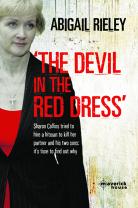The big legal story of the day is definitely the action being taken by convicted serial rapist Michael Murray to safeguard his privacy.
49-year-old Murray, who raped four women in a six day period in 1995, says he has been hounded by the press since his release from prison last year. He says he can’t take part in any meaningful rehabilitation programme when there are snappers hiding in the bushes wherever he goes and can’t even stay living in the same place. They say the public has the right to know where a serial sex offender is living.
Today was only the first day of the case so there’ll be a long wait to see what the court rules. It’ll be a judgement that anyone who covers the courts or crime will be watching with interest. Crime stories are big news in Ireland. Covering the big trials over the past few years I’ve grown used to seeing scrums outside the court after a verdict that would rival those usually reserved for Hollywood stars. Certainly a lot of the more paparazzi shots that appear in the papers are to do with crime lords rather than movie stars.
I’d be out of work if that interest wasn’t there but when it comes to privacy there’s a whole different can of worms. When photographers chase musicians or actresses they’re chasing people who signed up for the chase. Sudden celebrity might come as a shock but if you do something that requires you to perform in front of (hopefully) large crowds it kind of goes with the territory.
Those who commit crimes don’t tend to do it for an audience. They might crave some form of notoriety through their actions but it’s not really the same thing. Yet once they’ve been identified and especially once they’ve been caught and tried, they become a rather magnetic news story. This newsworthiness isn’t something that will fade with their looks. Once they’re convicted they are indelibly linked to their crime. If the crime was awful, tragic or extravagant then public interest in it will remain and so will journalistic interest.
Take Wayne O’Donoghue for example. Convicted in 2006 to four years for the manslaughter of his 11-year-old neighbour Robert Holohan, O’Donoghue was released from prison in February 2008 after serving three years. It had been a trial that hit all the front pages and passed into legal history when his mother Majella made certain allegations in her victim impact statement. Because of these comments this is a trial that tends to be raised any time there’s a discussion about victim impact statements and it remains fresh in the public mind.
Wayne O’Donoghue left the country after his release but as recently as this January the Sunday World ran a story about his new girlfriend. Joe O’Reilly’s girlfriend Nicki Pelley has been a regular tabloid fixture, photographed every now and then because she stuck by the man who was convicted of the brutal murder of his wife Rachel.
As long as the names of those convicted sell papers when they appear on the front page the press will keep their interest. That’s how newspapers work. When Sharon Collins, the subject of my first book Devil in the Red Dress, is released from jail the photographers will be waiting to see if her proposed victim PJ Howard is waiting to whisk her off to some Spanish villa. When Eamonn Lillis (subject of the latest book) has served his time there’ll be those wanting to see what he does next. There’ll probably also be those who are curious to see whether his former mistress Jean Treacy gets the Italian wedding she was planning while she was cheating on her fiancé with Lillis. The list goes on and on.
This is the nature of news. If something’s a story it’s a story. It might not be pleasant for those caught in the crosshairs but that’s the way it works. It may seem sordid or even rather repellent but these stories have been filling newspapers as long as there have been newspapers. But however you feel about the examples I’ve given what about those who have committed the really, really bad stuff…like Michael Murray, who raped four women in less than a week and whose own counsel describes as an “abnormal risk to the community”?
He served time for his crimes, his debt to society as decided by the courts. Is he entitled to privacy? A quick Google throws up some of the stories that obviously caused offence, stories of day trips to Bray, security alerts. When you look at the results Google throws up it certain gives the impression that he has had very little time since his release when he wasn’t being watched by a press posse. He’s not the first to receive this treatment but depending on the outcome of this case he could be one of the last.
These are the stories that lead to calls for a sex offenders register, for the public to have more, not less information about who lives close to them. But privacy is the right of every individual and that causes a problem. It’s going to be very interesting indeed to see how the Michael Murray case works out. I’m sure it won’t be the last time I post on the subject.

